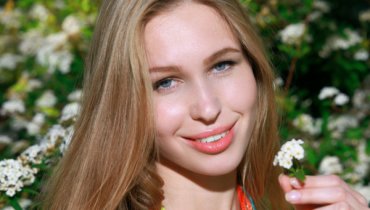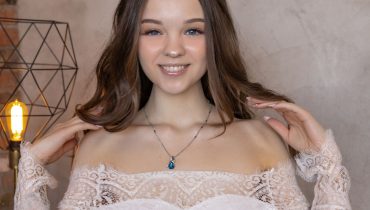When Clara Morris turned 40, she didn’t fear aging — she feared looking tired. “It wasn’t wrinkles that bothered me,” she laughs, “it was the dullness. My skin had lost that healthy glow I used to take for granted.” A beauty editor from Seattle and a lifelong skincare enthusiast, Clara had tried every serum, mask, and miracle oil she could find.
But the more products she layered, the less her skin seemed to respond. “It felt like my skin had forgotten how to renew itself,” she recalls. That’s when she discovered the quiet power of vitamin E for skin rejuvenation — and it changed not just her complexion, but her understanding of what true beauty really means.
From Surface Solutions to Cellular Support
Clara’s skincare journey began years earlier in the fast-paced beauty industry. “I used to test five new products a week,” she says. “I was obsessed with results — brighter, smoother, tighter.” But over time, her skin barrier weakened. “My dermatologist told me I had overexfoliated, overcleansed, and undernourished my skin,” she admits. “I was doing everything but helping it heal.”
Frustrated, she began researching nutrients that actually support skin health from the inside out. That’s when she stumbled upon vitamin E — a fat-soluble antioxidant known for protecting cells from oxidative stress. According to the National Institutes of Health (NIH), vitamin E helps stabilize cell membranes and neutralize free radicals caused by sun exposure, pollution, and stress — all key drivers of premature aging.
“It was like a lightbulb moment,” Clara says. “All those years, I was fighting my skin’s symptoms instead of feeding its cells.”
The Science Behind Vitamin E and Skin Rejuvenation
Vitamin E, or tocopherol, is often called the “skin vitamin.” It works in harmony with vitamin C to prevent oxidative damage and maintain the integrity of collagen — the protein that keeps skin plump and elastic. The Healthline reports that vitamin E not only defends against UV damage but also accelerates wound healing and reduces inflammation.
Dr. Amelia Perez, a dermatologist at the Cleveland Clinic, explains: “Vitamin E acts like an antioxidant shield. It absorbs free radicals before they can harm the skin’s lipid barrier.” This barrier is crucial for moisture retention and defense against environmental toxins. Without it, skin becomes dry, flaky, and more vulnerable to wrinkles. “Vitamin E doesn’t erase age — it preserves vitality,” Dr. Perez says.
Clara’s initial skepticism faded after two months of consistent supplementation. “I started taking 200 IU of natural vitamin E daily,” she says, referencing guidance from the Mayo Clinic, which recommends a balanced intake of 15 mg (22.4 IU) for adults, with upper limits around 1,000 mg for supplements. “Within weeks, my skin texture softened. Makeup went on smoother, and people kept asking if I had changed foundations — but I hadn’t.”
Vitamin E: More Than a Beauty Supplement
Unlike topical serums that fade with each cleanse, vitamin E works at the cellular level. It integrates into skin membranes, protecting lipids and DNA from oxidative damage. “It’s like reinforcing the walls of your house instead of just repainting them,” Clara explains. The Harvard Health Publishing notes that vitamin E’s antioxidant properties also extend beyond the skin — supporting immune response and cardiovascular health.
Still, Clara’s goal was clear: she wanted to see visible skin rejuvenation. So she paired her vitamin E capsules with dietary changes. “I added almonds, sunflower seeds, spinach, and avocados — all rich in natural vitamin E,” she says. “Food gives you the full nutrient spectrum — not just the isolated vitamin.”
That shift to whole foods amplified her results. “My skin stopped feeling thirsty all the time,” she says. “I didn’t need heavy creams anymore — my skin was producing its own moisture.” Studies confirm her experience: vitamin E supports the skin’s lipid layer, reducing transepidermal water loss and improving hydration levels. The Journal of Molecular Medicine has linked adequate vitamin E levels to stronger collagen networks and faster cell turnover — two hallmarks of youthful skin.
Combining Vitamin E with Other Nutrients
One of Clara’s most valuable lessons came from her dermatologist: “No nutrient works alone.” Vitamin E is most effective when paired with vitamin C, selenium, and omega-3 fatty acids. “They recycle each other,” Dr. Perez explains. “When vitamin E neutralizes a free radical, it becomes oxidized — vitamin C regenerates it, restoring its antioxidant power.”
Clara started drinking orange juice with her supplements and switched to salmon twice a week. “That combination was magic,” she says. “It wasn’t about adding more pills — it was about creating synergy.”
She also found that timing mattered. “Fat-soluble vitamins like E absorb better with healthy fats,” she says. “I take mine with breakfast — usually avocado toast or Greek yogurt with chia seeds.” Within months, her skin regained elasticity and luminosity. “It didn’t just look better — it felt stronger,” she says. “I could actually see it bounce back in the mirror.”
Topical Vitamin E: The Double-Edged Sword
Encouraged by her progress, Clara decided to explore vitamin E serums and oils. “Everyone on beauty TikTok was mixing vitamin E capsules into moisturizers,” she laughs. “I had to see what the hype was about.” The results, however, were mixed. “It worked beautifully for hydration, but pure oil clogged my pores,” she says. “I learned that not all vitamin E products are formulated equally.”
Experts agree. According to Harvard Health, topical vitamin E can soothe inflammation and promote healing, but in some individuals, it may cause breakouts or irritation. “Less is more,” Dr. Perez advises. “Use products with 0.5–1% concentration and combine them with other antioxidants like vitamin C or niacinamide.”
Clara found her balance with a gentle night serum containing vitamin E, hyaluronic acid, and green tea extract. “That trio became my holy grail,” she says. “It nourishes, hydrates, and protects — without the greasiness.”
Healing Scars and Sun Damage
One of vitamin E’s most popular uses is scar repair. “I had an acne scar that haunted me for years,” Clara recalls. “It faded significantly after six weeks of applying a vitamin E-infused gel.” Research from the National Center for Biotechnology Information supports this observation: topical vitamin E enhances fibroblast activity — the cells responsible for wound healing — and reduces pigment formation in scar tissue.
She also noticed that her sunspots lightened over time. “It’s subtle, but my complexion looks more even,” she says. Vitamin E’s photoprotective qualities make it a favorite in sunscreens and after-sun products. “I never skip SPF,” Clara says. “But I think vitamin E helps my skin recover faster after sun exposure.”
Practical Advice for Using Vitamin E Safely
As Clara’s online following grew, she began sharing her vitamin E regimen — but always with a note of caution. “Supplements are powerful,” she says. “They can help, but misuse can backfire.” She advises consulting a healthcare provider before starting any high-dose vitamin E, especially for individuals on blood thinners or with chronic conditions. “Natural doesn’t mean risk-free,” she reminds her readers.
According to the Mayo Clinic, excessive intake of vitamin E supplements (over 1,000 mg daily) can increase the risk of bleeding and interfere with vitamin K metabolism. “That’s why I stick to moderate doses,” Clara says. “Balance is beauty.”
She also highlights the importance of product quality. “Look for supplements labeled ‘d-alpha-tocopherol’ — that’s the natural form,” she advises. Synthetic versions, listed as ‘dl-alpha-tocopherol,’ are less bioactive. “And always choose reputable brands that test for purity,” she adds.
Beyond Beauty: The Confidence Connection
After a year on her vitamin E journey, Clara’s transformation went deeper than skin. “It wasn’t just about glow anymore,” she reflects. “It was about feeling in harmony with my body.” She credits the experience with shifting her mindset from perfection to nourishment. “We live in a culture obsessed with anti-aging,” she says. “But real beauty is about supporting your body’s natural intelligence — not fighting time.”
Today, Clara writes a weekly wellness column called Radiance Redefined, where she combines science and storytelling to help women build sustainable skincare habits. Her signature mantra? “Feed your skin like it’s alive — because it is.”
Clara’s 5 Rules for Glowing, Resilient Skin
- 1. Think nutrition, not miracle: “Your skin is an organ — not wallpaper. It needs real nourishment.”
- 2. Protect, then repair: “Vitamin E helps repair, but sunscreen prevents the damage in the first place.”
- 3. Combine wisely: “Pair vitamin E with vitamin C and omega-3s for synergistic effects.”
- 4. Prioritize consistency: “Daily habits beat expensive treatments every time.”
- 5. Age gratefully: “Radiance isn’t youth — it’s vitality. Take care of yourself, and your skin will reflect that.”
Looking back, Clara says the most surprising part of her journey was realizing how interconnected skin health is with overall wellness. “You can’t separate your skin from your lifestyle,” she says. “Sleep, nutrition, stress — it all shows up on your face.” For anyone considering vitamin E for skin rejuvenation, her advice is simple: “Don’t chase instant results. You’re teaching your cells to heal smarter, not faster.” After all, as Clara says with a smile, “Youth fades — but vitality, that’s something you can nurture.”





























































